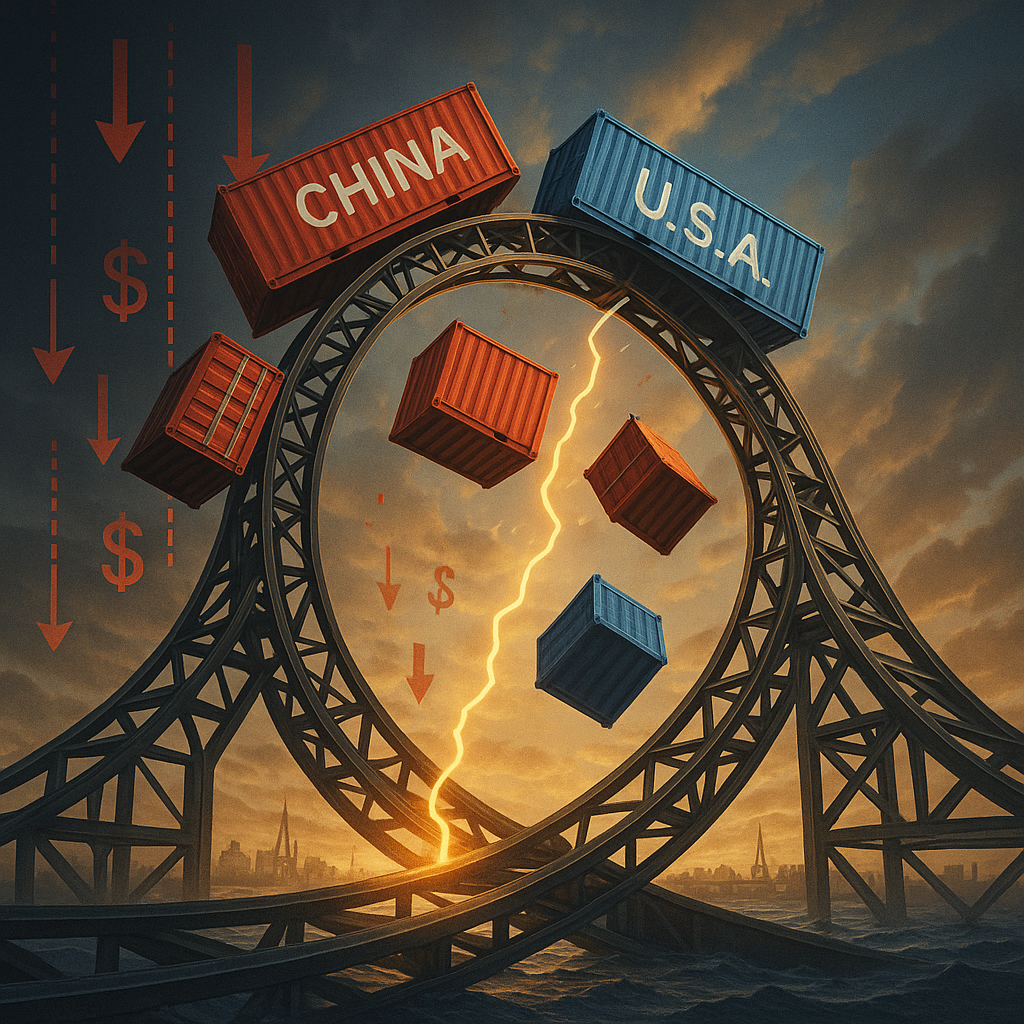Tariff volatility is pushing Chinese exporters to a breaking point. The “tariff rollercoaster” — jumps, reversals, threats — is prompting many firms to give up on the U.S. entirely. In recent months, the instability has done more than rattle supply chains: it’s forcing a rethink of longstanding trade strategies.
The Tariff Whiplash: What’s Happening
From unpredictable hikes to sudden tariff pauses, the U.S.–China trade environment is hardly stable. One day exporters face the specter of 100 percent duties; the next day, talk of a truce or negotiation filters out. For manufacturers, that’s not a quirk — it’s a risk that cannot easily be absorbed.
Take the example of Gstar Electronics, which has shifted its sales efforts to Europe, Latin America, the Middle East, and Africa — markets seen as steadier. At the recent Canton Fair, U.S. buyers were noticeably absent. Many Chinese exporters now claim that U.S. demand has faded not because they pulled out — but because U.S. buyers can’t stomach the uncertainty.
Why Many Exporters Are Giving Up
1. Thin Margins, Big Bets
Tariff instability eats into cost forecasts. If you can’t guarantee tariffs six months down the line, producing goods for the U.S. becomes a speculative game. Some Chinese firms report they’re already losing money on orders, even before factoring in shipping, compliance, and tariff risk.
2. Diversification Isn’t Just a Buzzword
Rather than live and die by U.S. demand, many suppliers are building relationships with buyers elsewhere. In the first nine months of 2025, Chinese exports surged to markets in Southeast Asia, Latin America, and Africa — even while U.S. sales shrank. Many exporters see these shifts not as a fallback, but as a necessity.
3. Buyers Are Leaning Out
It’s not always the suppliers who pull back. American importers, worried about sudden tariff reversals or supply chain disruption, are reducing their exposure to Chinese manufacturing. Some are chasing “safer” sourcing from Vietnam, India, or Southeast Asia.
4. Psychological Fatigue
Business decisions don’t happen in spreadsheets alone. Many manufacturers confess they’re just tired. The repeated whiplashes in policy — hike, pause, threat, retaliation — drain morale and confidence. When the political winds change overnight, many firms would rather reallocate than stay poised for the next tariff shock.
Implications for Global Trade
The retreat of Chinese exporters from the U.S. market is rippley. Here are a few likely outcomes:
- Supply chain realignment: As Chinese firms exit or scale back U.S. exposure, components and manufacturing may shift to Southeast Asia, India, or Mexico.
- Increased costs for American consumers and firms: Less competition from Chinese suppliers could push prices upward.
- Broader geopolitical friction: As China doubles down on export controls — especially in rare earths — the U.S. response may be more tariffs or sanctions.
- Pressure on trade diplomacy: The trade war isn’t just about economics — it’s a test of whether deals, negotiations, or brute policy will win out.
Not All Is Lost — But the U.S. Market Looks Less Assured
To be clear: the Chinese export sector isn’t wholly writing off the U.S. They still hope for stability, deal-making, and policy certainty. But for now, many have reclassified the American market as “at risk.”
This is the sort of shift that doesn’t reverse overnight. If the U.S. wants Chinese manufacturing back in its orbit, it will need credible, predictable trade policy. Until then, expect Beijing’s exporters to lean harder into the rest of the world — and increasingly treat the U.S. as a once-central, now perilous frontier.


